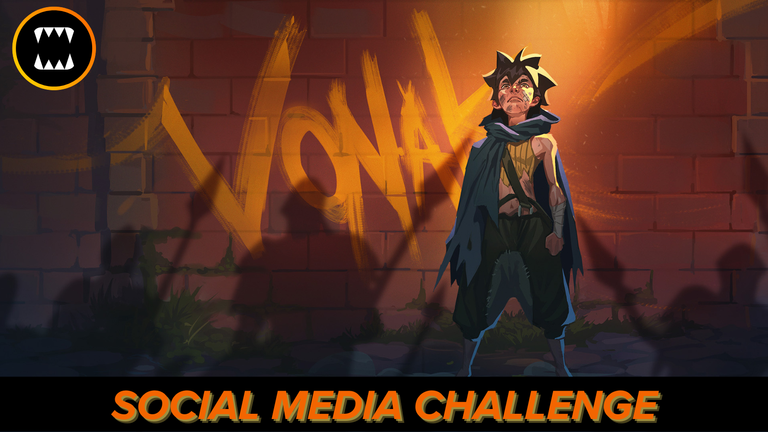

Summoners in Splinterlands
Summoners are essential to any playable collection in Splinterlands. Before selecting Units (or Monsters), players must choose a Summoner, which will affect their team or the opponent's team through buffs, debuffs, or special abilities. The chosen Summoner determines which Units can be summoned into battle based on their element.
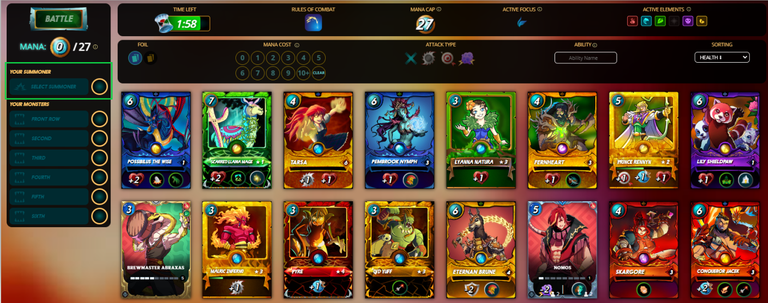
Summoner Components
- Rarity: Indicates the relative scarcity and strength of the card. Categories are:
- Common, Rare, Epic, and Legendary.
Mana Cost: This is the amount of mana required to summon the Summoner and its Units.
Buffs/Debuffs: Increase or decrease the stats of the player's or opponent's Units.
Skills: Special abilities that the Summoner grants to Units.
Element: Each Summoner belongs to one or two elements: Fire, Water, Earth, Life, Death, Dragon, or Neutral.
Card Level and Base Experience (BCX): Summoners can increase their level by combining copies of the same card, allowing them to summon higher level Units.
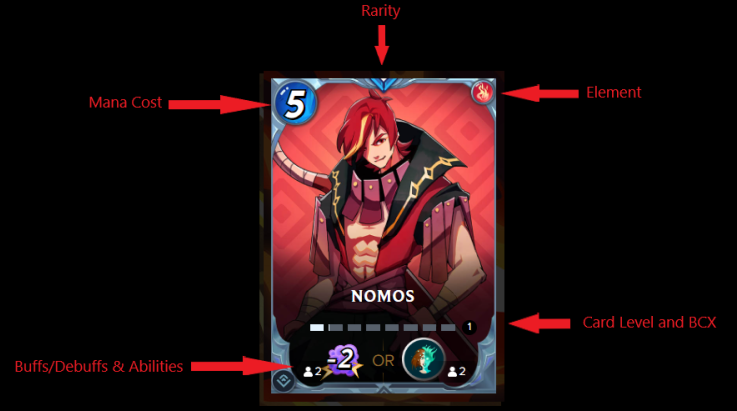
Featured Summoners
- Dragon Summoners: Allows the summoning of Dragon Units and a second element. By choosing a Dragon Summoner, the player selects an additional element for the battle.
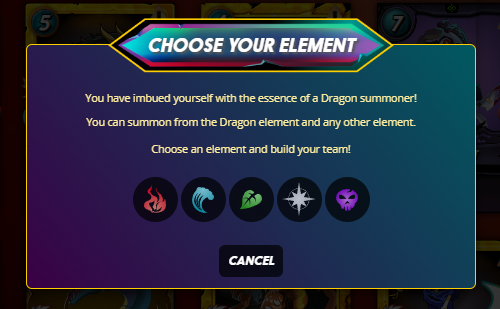
- Neutral Summoner: Lux Vega is the only Neutral Summoner, allowing the summoning of Neutral Units and a second element. However, it cannot be used in the "Taking Sides" ruleset.
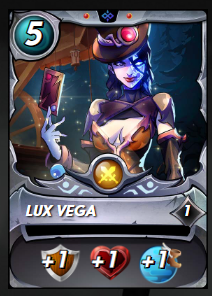
Rebellion Summoners: Introduces two new mechanics: Tactics and Multi-Element Selection.
Tactics Summoners: Allows you to view your opponent's equipment before battle and select which Units will be buffed or weakened.
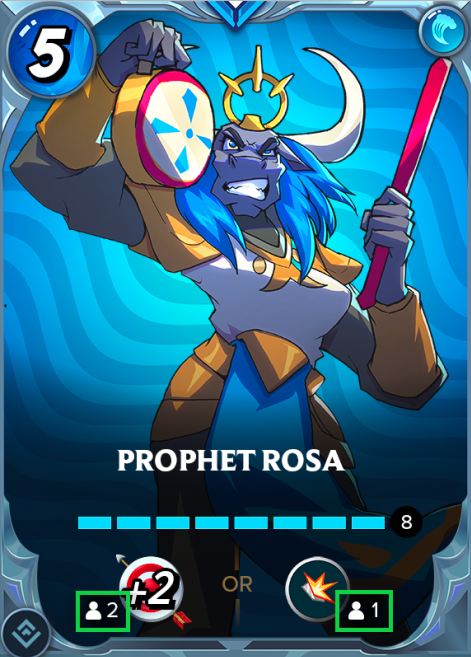
- Multi-Element Summoners: Provides access to two different elements at a low mana cost, but without providing buffs or debuffs. However, if an element is excluded in battle, these Summoners do not grant access to that element.
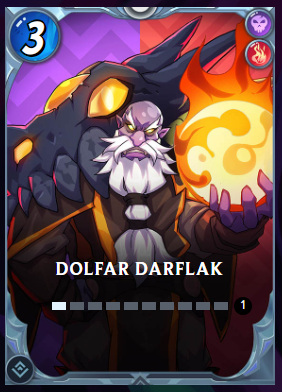
How to Level Up Summoners
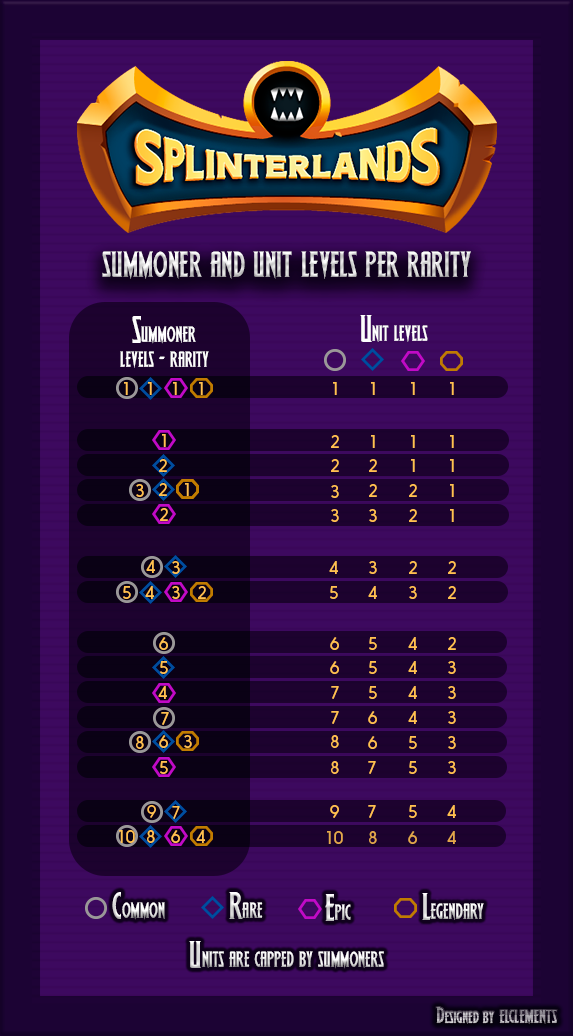
Unlike Units, Summoners do not gain skills or stats by leveling up. Instead, a higher-level Summoner can summon higher-level Units. To level up, copies of the same card must be combined.
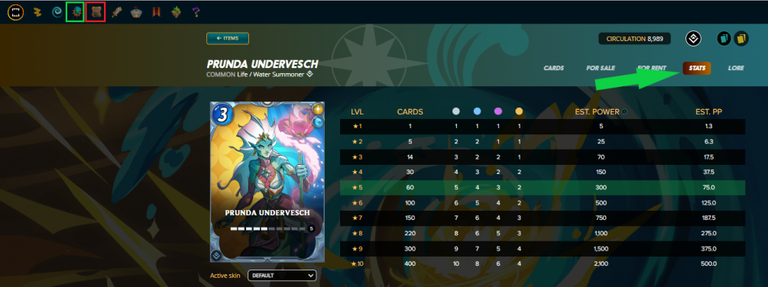
Units in Splinterlands
Units are the cards that make up your battle equipment. Unlike Summoners, Units engage directly in combat, absorbing damage and attacking the opponent. Units vary based on their strengths and weaknesses, making them more useful in different situations.
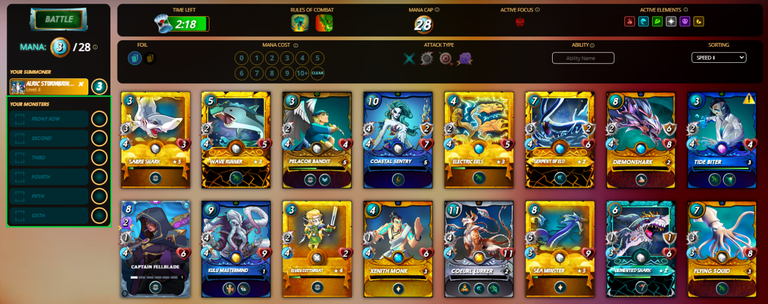
Unit Components
Rarity: Same as Summoners, can be Common, Rare, Epic, or Legendary.
Mana Cost: The amount of mana required to summon them into battle.
Skills: Specialties that Units possess or can receive from the Summoner.
Element: Units belong to one or two elements or can be Neutral.
Stats: Numeric indicators for Speed, Attack Strength, Health, and Armor.
Card Level and Base Experience (BCX): Like Summoners, Units can increase their level by combining copies of the same card to increase their strength.
Each Unit is placed in the Your Monsters slots to complete the team selected for battle.
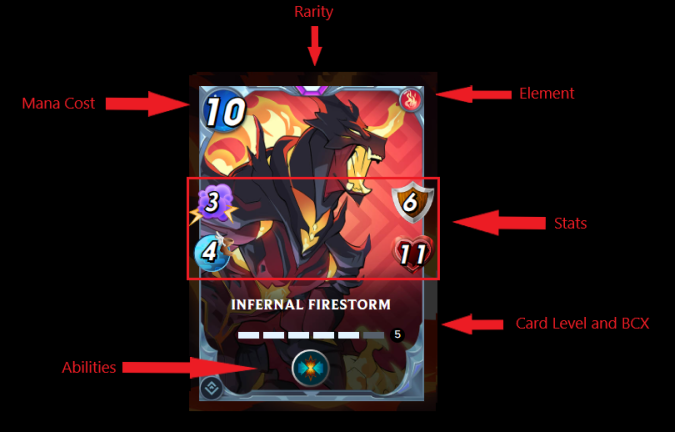
Thanks for sharing! - @alokkumar121
